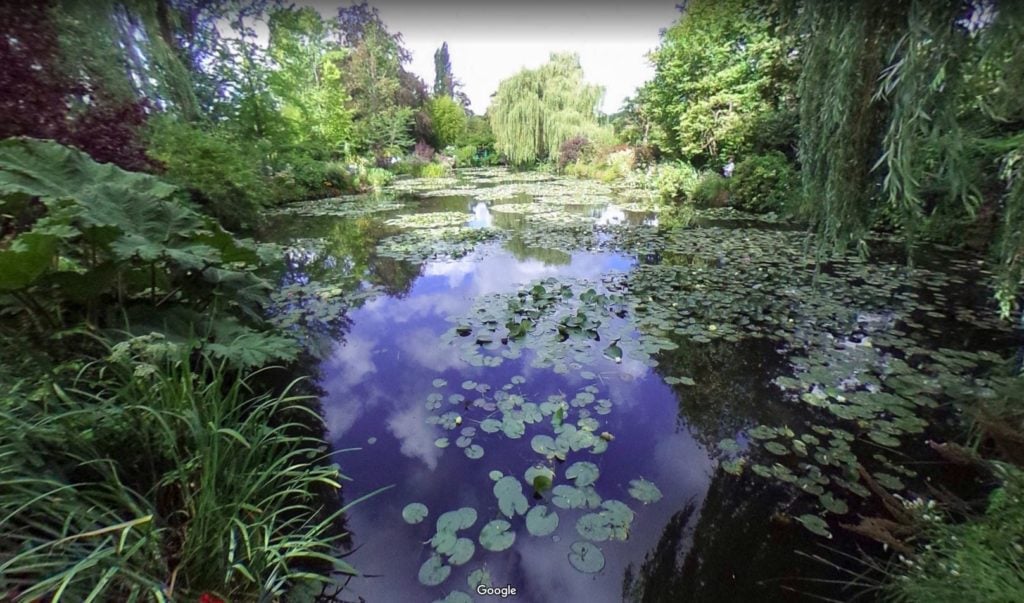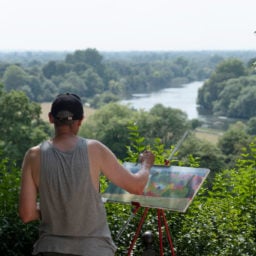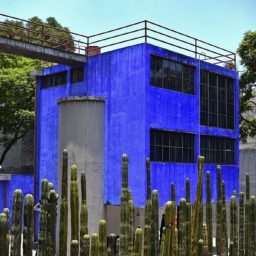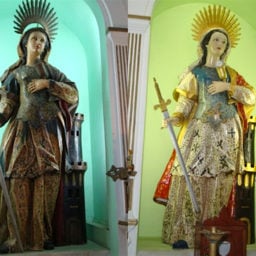Google Maps offers plenty of choices for the armchair vacationer, via its famous Street View feature and the vast collection of images of landmarks shared publicly on it. Some people like to use this trove to pay a virtual visit to their childhood homes. Others like to stalk celebrities. And if you’re interested in where artists lived and worked, well, there’s something for you too.
Seeing artist studios is interesting for a host of reasons. Some, such as the gardens at Monet’s retreat Giverny, are very much a part of the legend of the artists themselves. Others, such as Eugene Delacroix’s final apartment, offer insight into the environment that informed their work. Still others, including the nondescript street where Magritte spend years working out his Surrealist delights, offer a sense of what their imagination had to define itself against.
Here, we’ve tracked down 11 historic sites where artists lived and worked that you can see in handy 3D image form without even leaving your chair. (Click on the name of the artist to scroll around an interactive picture in your browser directly.)
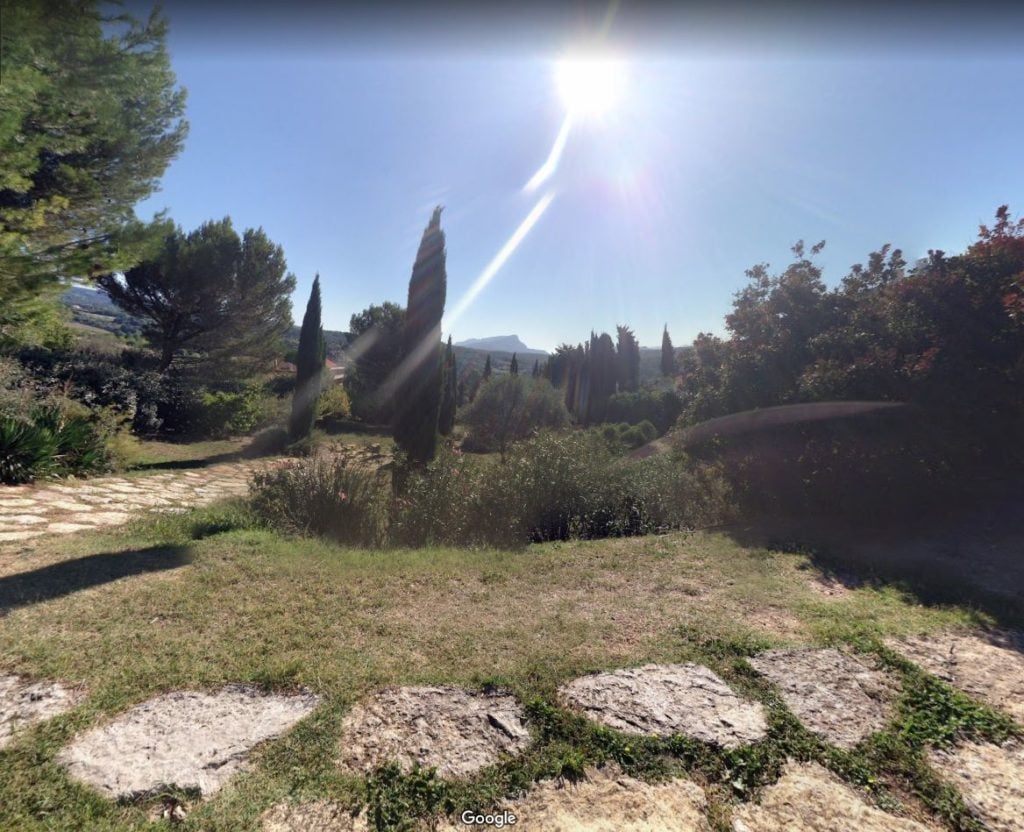
View of Mount Sainte-Victoire, from the “Terrain des Peintres” lookout spot, as seen on Google Street View.
What: A short 15-minute walk from the studio where Paul Cézanne retreated into seclusion to paint (also viewable) is “Painters Park.” That’s what residents of Aix-en-Provence have dubbed this lookout point where the post-Impressionist progenitor painted his famous views of Mont Sainte-Victoire. The version found on Google maps certainly doesn’t do the famous view justice—but if you’re stuck at a desk and dreaming of the French countryside, it’ll do.
Where: 49 Avenue Paul Cézanne, 13100 Aix-en-Provence, France
Interesting Fact: On this spot on Les Lauves hill, Cézanne painted Mont Sainte-Victoire no less than 28 times. Reproductions of some of the most famous works are on display in the Park.

Exterior of Jean Cocteau House, as seen on Google Street View.
What: The French poet, filmmaker, designer, and artist Jean Cocteau lived in this country retreat in Milly-la-Forêt from 1947, to get away from Paris in the wake of the huge fame engendered by his film Beauty and The Beast. Cocteau was buried in the nearby chapel in 1963. The house contains works by the artist as well as pieces lent by the Pierre Bergé and Yves Laurent Foundation. (If you click through the images that have been shared of the house’s insides, you are in for some great surprises…)
Where: 15 rue du Lau, 91490 Milly-la-Forêt, France
Interesting Fact: Bergé, who was the business partner of Yves Saint Laurent, purchased Cocteau’s house in order to preserve it as a museum, donating it to the region shortly before his death. In case you missed the inauguration, it is actually captured in a 3D photo here!
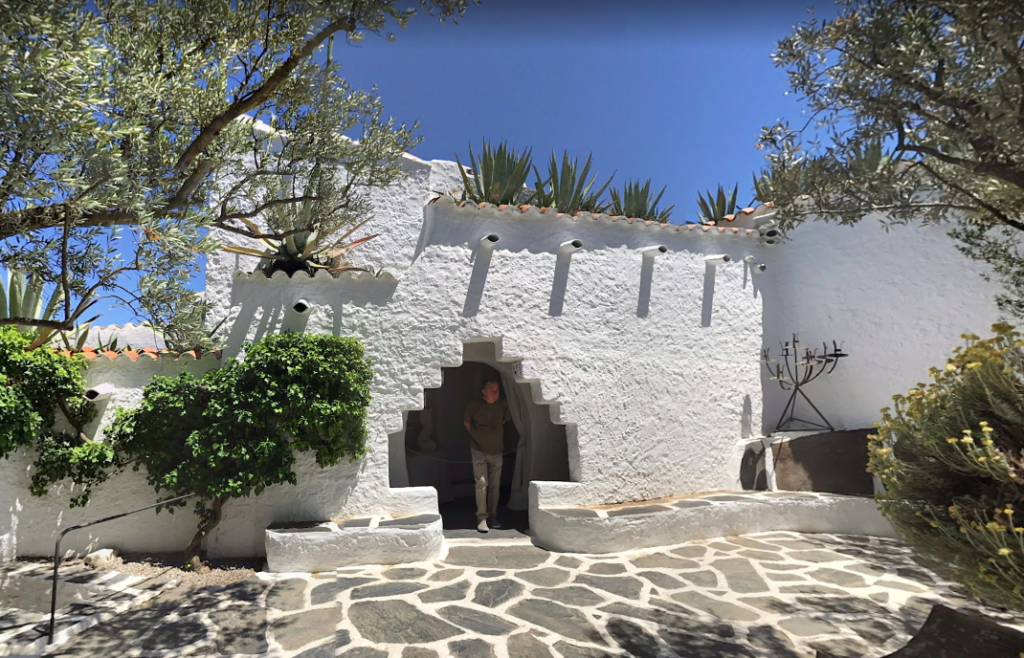
Dalí’s former studio and home in Cadaqués, which is now a museum, on Google Street View.
What: Dalí bought a fisherman’s hut in the isolated village of Portlligat in 1930. He added to it as he prospered, transforming it into an idiosyncratic home and studio to suit his eccentric tastes. He lived and worked there with Gala, his wife and muse, until her death in 1982. The house reopened as a museum in 2009, so Dalí’s original madcap interiors are preserved as they were when the Surrealist painter was working there.
Where: Platja Portlligat, 17488 Cadaqués, Girona, Spain
Interesting Fact: The white-washed house is structured like a labyrinth, with a “bear lobby” at the center. There is a view of the Portlligat bay from every room.
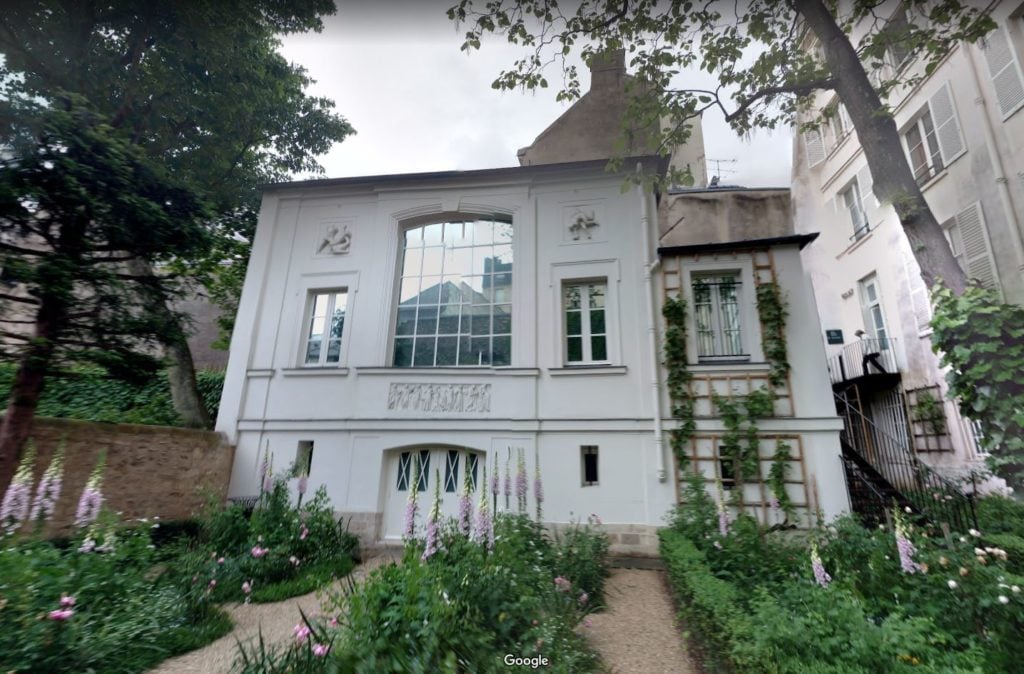
Musée National Eugène Delacroix, seen from its garden, as viewed on Google Street View.
What: Now the Musée National Eugène Delacroix, this apartment is where the Romantic dynamo moved in December 1857 to be close to the Church of Saint-Sulpice, as he labored on the decoration for Saint-Agnes Chapel. The artist spoke highly of the inspiration this particular vista offered: “My apartment is decidedly charming. The view of my little garden and the cheerful appearance of my studio always make me happy.”
Where: 6 rue de Furstenberg, 75 006 Paris, France
Interesting Fact: The apartment didn’t become an official monument until 1971, more than a century after he died here in 1863.

Dürer House in Nuremberg, Germany, as seen on Google Street View.
What: The master of the German Renaissance purchased this house in 1509, after returning to his hometown of Nuremberg, and lived and worked here for two decades. It is now a museum, and in-person visitors can get tours of the house by an actress dressed as Dürer’s wife (sadly, not a feature yet offered by Google).
Where: Albrecht-Dürer-Straße 39, 90403 Nürnberg, Germany
Interesting Fact: The structure boasts being “the only surviving 15th century artist’s house in Northern Europe,” though it has been restored multiple times, and even suffered damage during Allied bombing raids on Nuremberg in 1945.
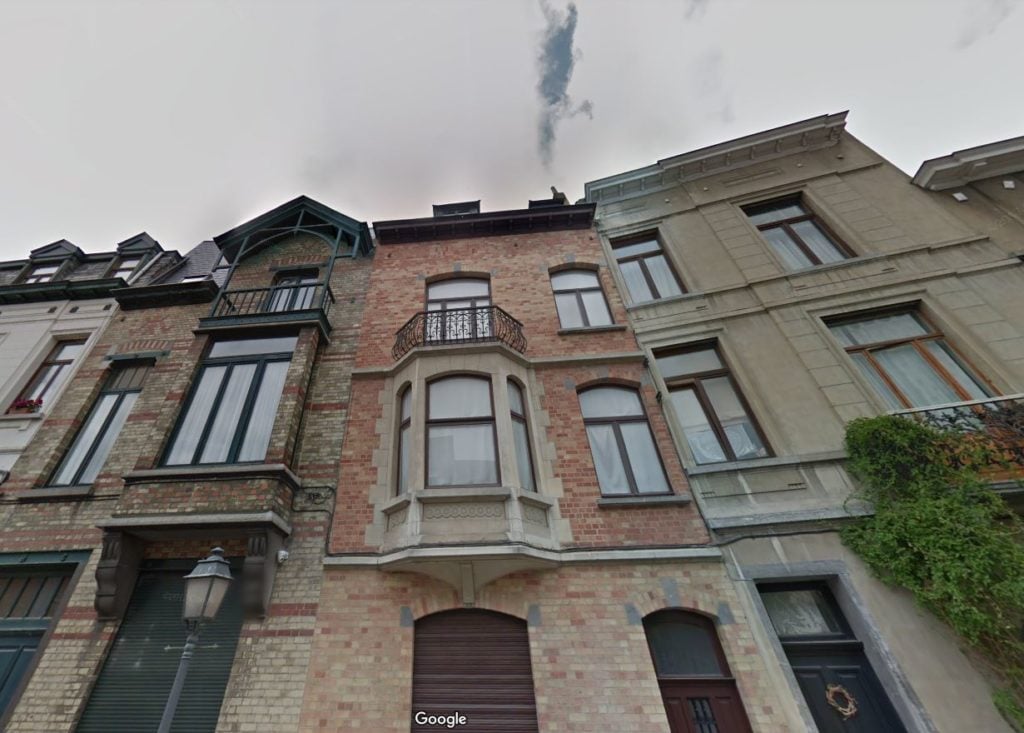
Magritte’s home and studio in Brussels, as seen on Google Street View.
What: The Belgian Surrealist painter lived and worked here between 1930 and 1954, producing more than half his work behind the closed door of number 135 on this suburban Brussels street. Inside there is a small furnished apartment where Magritte lived with his wife Georgette for 24 years, plus his studio, and their garden. Since 1999, the house has been open to the public. Magritte’s works, personal items, and documents from his archive are on show.
Where: Rue Esseghem 135, 1090 Jette, Brussels, Belgium
Interesting Fact: The couple decided to move to the more bourgeois area of Schaerbeek in Brussels in 1954, which they saw as better fitting their social status.
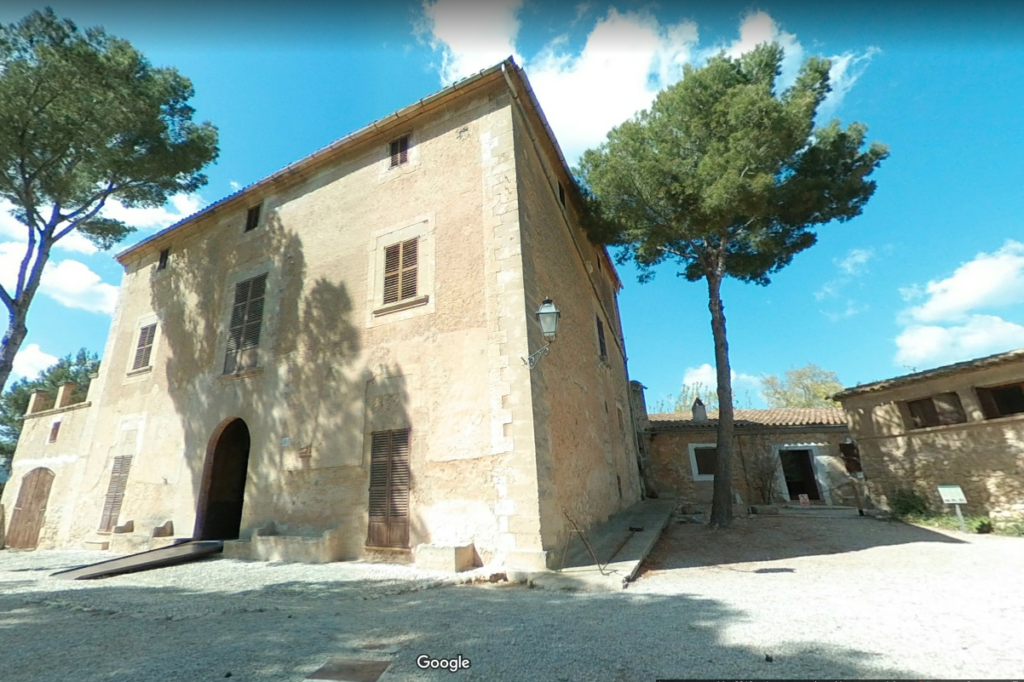
Joan Miró’s studio in a historic farmhouse on Google Street View.
What: The Spanish-Catalan artist returned home to the island of Mallorca where he and his wife created a home and studio on the edge of the capital Palma. In 1956, his great friend, the architect Josep Lluís Sert, designed a new studio but for more than a year the artist struggled to make use of it. Miró preferred to remain in his old studio next door, an 18th-century farmhouse. In 1982, the Spanish architect Rafael Moneo added a gallery to form the Fundació Pilar i Joan Miró Mallorca.
Where: Fundació Pilar i Joan Miró a Mallorca, Carrer de Saridakis, 29, 07015 Palma de Mallorca, Mallorca, Spain
Interesting Fact: Miró used the white walls of his studio in the former farmhouse to sketch ideas for paintings and murals. His graffiti is carefully preserved.
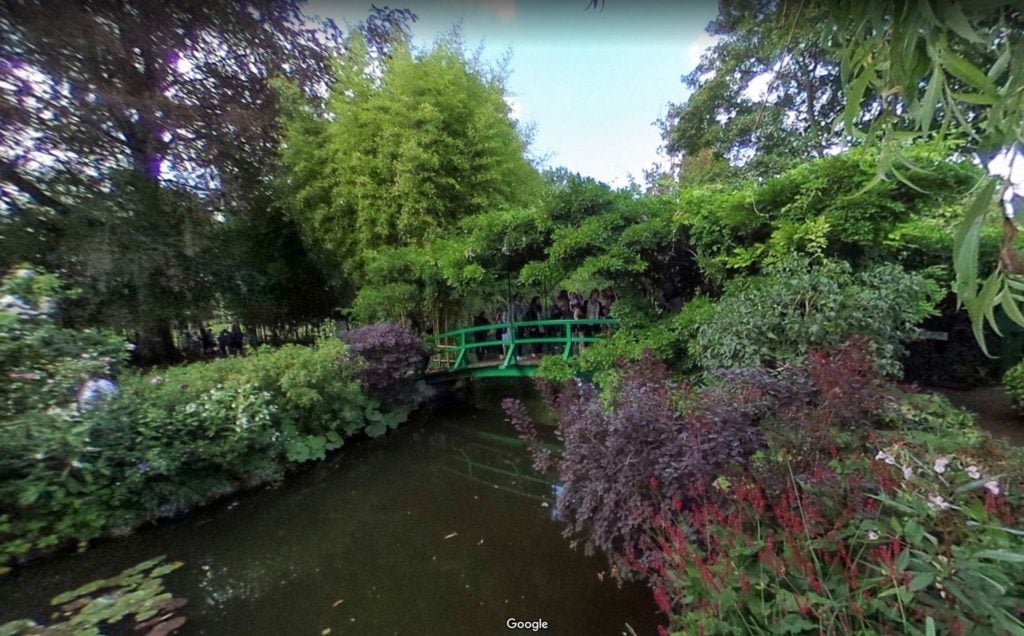
Monet’s Giverny gardens, as seen on Google Street View.
What: Perhaps the single most famous studio-house, Giverny was not just an inspiration for Claude Monet’s famous paintings; it offers the spectacle of the landscape itself made over to look like an Impressionist painting. With a few clicks, you can stroll its pathways, go inside the house, and see vistas like the one at the top of this article, taken from the property’s Japanese-style bridge.
Where: 84 rue Claude Monet, 27620 Giverny, France
Interesting Fact: Though Google Maps photos allow you to beat the crowds, tourists still litter the online views.
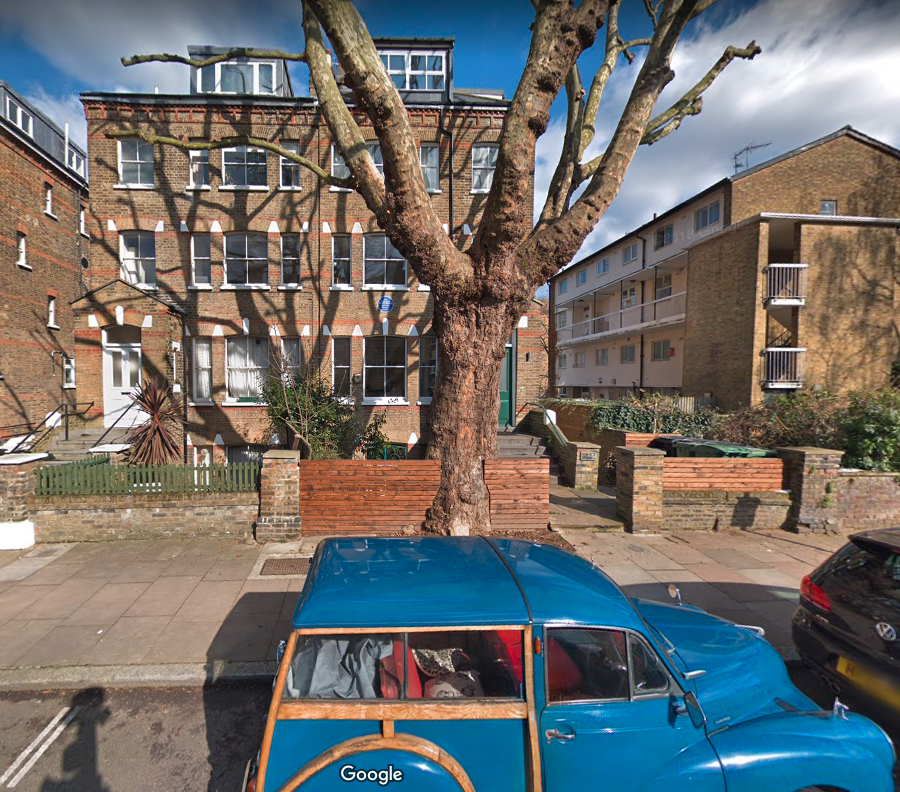
Mondrian worked in a tiny studio in a back garden of a Hampstead house, shown on Google Street View.
What: The artist Piet Mondrian was forced to flee Paris in 1938. He found temporary refuge in Hampstead in North London, where he transformed a tiny artist’s studio in Parkhill Road into a three-dimensional version of his paintings. The studio shared a backyard with the studios of his friends Barbara Hepworth and Ben Nicholson. Other emigres in Hampstead at the time included Naum Gabo, Walter Gropius, and Marcel Breuer. They, like Mondrian, kept heading west, eventually reaching the US—but for a brief period before Hitler’s bombs fell, this humble street was a center of European Modernism.
Where: 60 Parkhill Road, Hampstead, London, England NW3 2YT
Interesting Fact: Mondrian loved jazz and dancing, although not everyone was impressed with his skill on the dance floor. Miriam Gabo, wife of Naum Gabo, said that Mondrian “was a terrible dancer… We had to take turns dancing with him.”
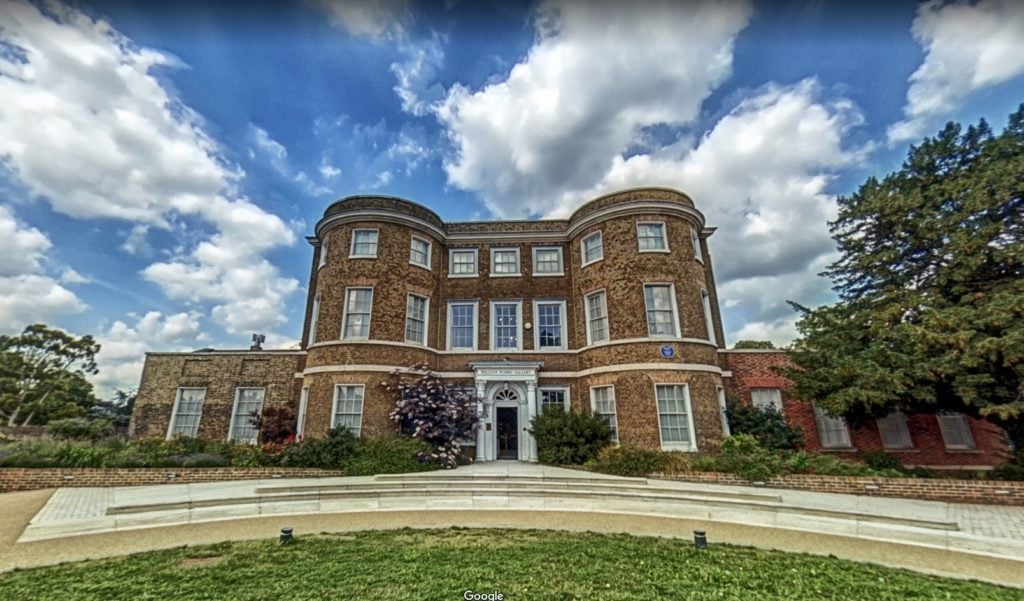
Exterior of William Morris Gallery, as seen from Google Street View.
What: The Georgian villa where the future Arts and Crafts guru was raised is now a museum stuffed to the gills with William Morris designs, the world’s most thorough collection (you can wander around inside virtually, here and here). The exterior shows the opulent lifestyle that incubated the future radical.
Where: Lloyd Park, Forest Road, Walthamstow, London, United Kingdom, E17 4PP
Interesting Fact: In nearby Lloyd Park, a click of the map plunges you into a crowd captured with their eyes raised in awe at a light show from a recent festival. Would Morris, who looked back to the crafts of the Middle Ages as a model, have liked the high-tech display? Hard to say, but it’s a fun contrast nevertheless.
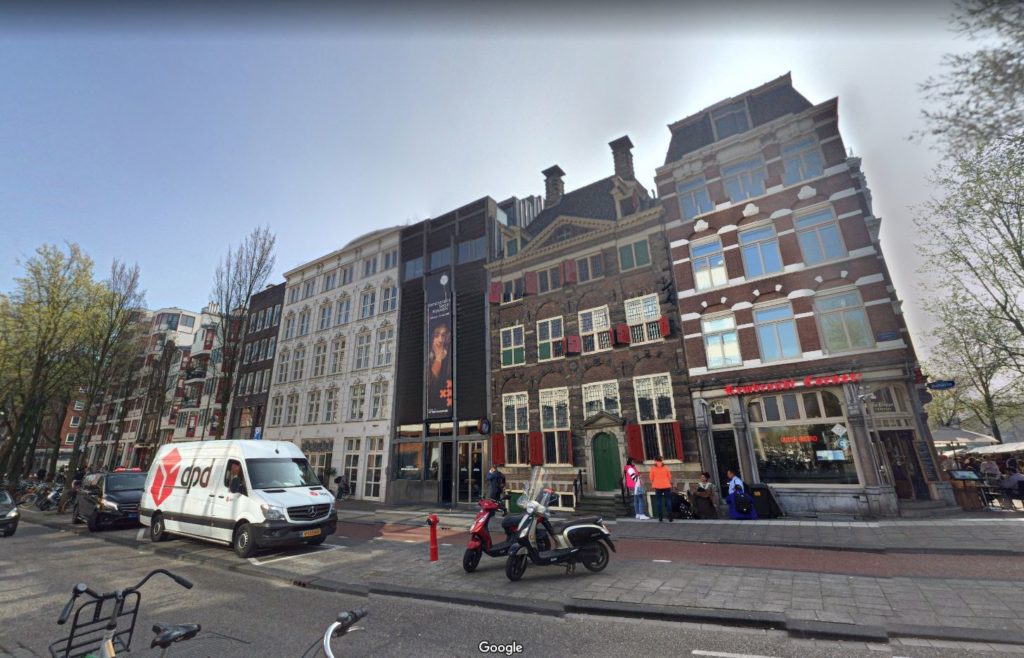
Rembrandt’s house and workshop in Amsterdam, as seen in Google Street View.
What: The quintessential Dutch Old Master, Rembrandt van Rijn, lived and worked in this building in central Amsterdam for 20 years. Now a popular museum, its interior has been meticulously restored with objects and furniture to look and feel as it did in the 17th century. You can see where Rembrandt created many of his most famous paintings, including the Night Watch (1642).
Where: Jodenbreestraat 4, 1011 NK Amsterdam, Netherlands
Interesting Fact: Rembrandt could not keep up with his mortgage payments on this building. Although he had to move when he was declared bankrupt in 1656, the artist kept making money from his art without the proceeds falling into the hands of his creditors thanks to his canny mistress Hendrickje Stoffels.
